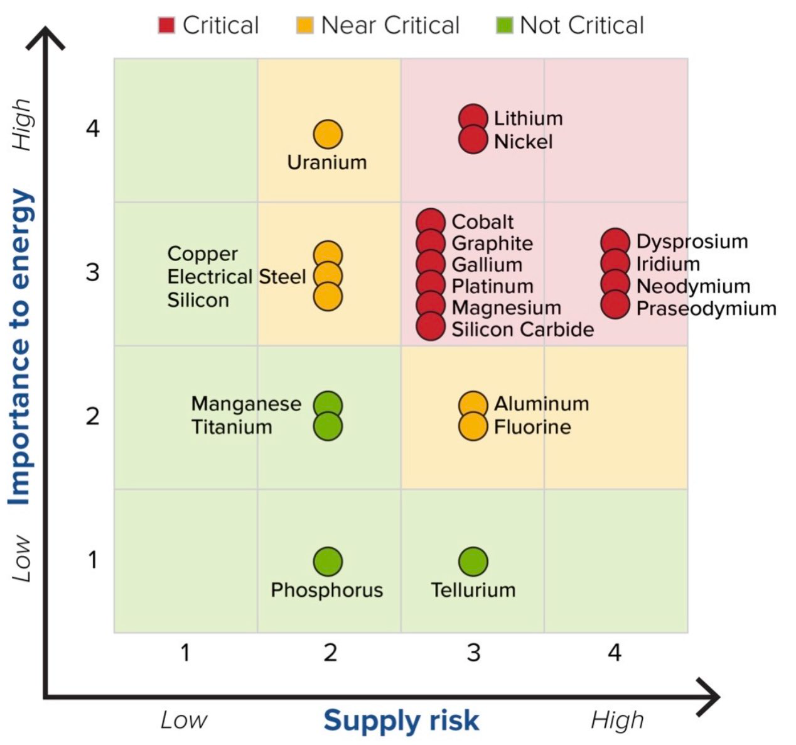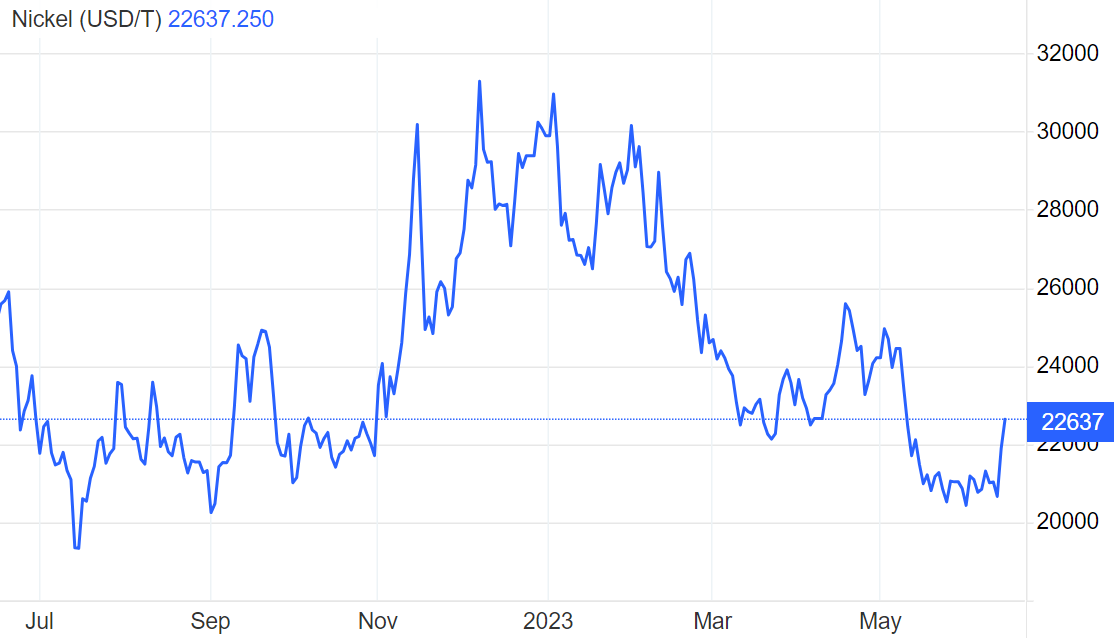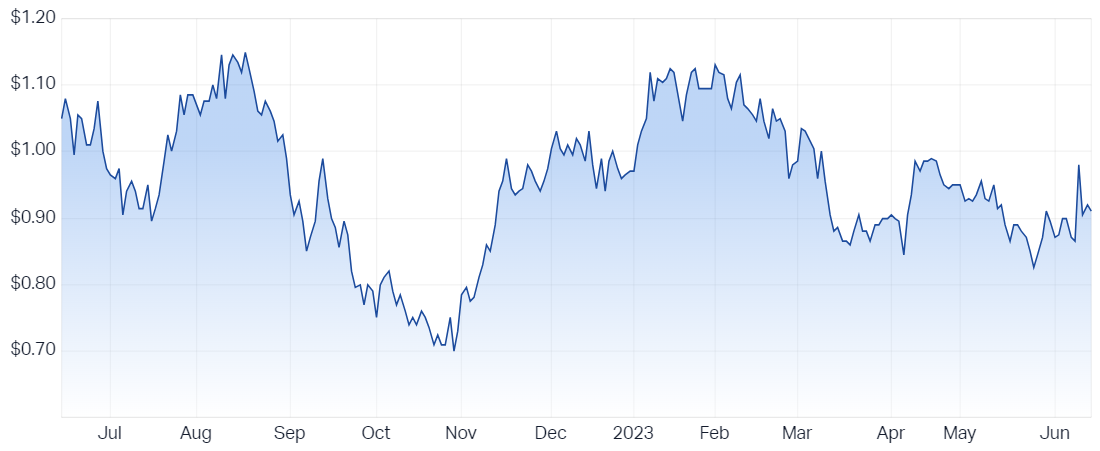Nickel market surplus expected to last until 2025: How will ASX miners fare?
A tsunami of supply from Indonesia has smothered nickel’s prospects of delivering lithium-like gains, at least in the near term. Nickel futures are trading around US$22,000 a tonne, down around 27% year-to-date and not far off 10-month lows.
But earlier this month, the US Department of Energy released its latest Critical Materials Assessment flagged lithium, nickel as well as a handful of specific rare earths as commodities most important to the energy transition and at the highest supply risk.

At present, approximately two-thirds of global nickel demand comes from the stainless steel industry. It remains a commodity that’s dominated by macro events and the ebbs and flow of industrial activity. And that’s what makes the nickel trade so difficult as investors must juggle near-term volatility against the otherwise bullish long-term outlook.
As for ASX-listed nickel names, performance has been mixed and more favourable for diversified, large cap names like IGO (ASX: IGO) and Nickel Industries (ASX: NIC), which are up 15% and down -5.2% year-to-date respectively. As opposed to mid-to-small cap players like Mincor (ASX: MCR), Centaurus Metals (ASX: CTM) and Panoramic (ASX: PAN), which are down 6.6%, 31.3% and 49.7% respectively.
So what’s the play?
- Is the supply from Indonesia a cause for concern?
- Does EV demand pave a runway for higher nickel prices – and if so, when will this begin to materialise?
- Should investors begin to place a few nickel names on their watchlists?
In this wire, I try to answer those questions with the help of Darko Kuzmanovic – Senior Portfolio Manager of the Global Natural Resources Fund at Janus Henderson Investors.
The story so far: Deficit on halt
Global nickel production is forecast to increase 7.2% in 2023 to 3.4 million tonnes, with Indonesia accounting for four-fifths of this increase, according to the Office of the Chief Economist.By 2028, Indonesia is projected to produce almost 3.8 million tonnes.
The flurry of Indonesian supply led to a 105,000 tonne surplus in 2022, according to the International Nickel Study Group (INSG), which expects an even larger surplus in 2023. The surplus is primarily due to an increase in Class 2 nickel production otherwise known as non-LME deliverable materials such as nickel pig iron, mixed hydroxide precipitate (MHP) and nickel sulphate.
Almost all of Indonesia’s nickel reserves are laterite ore which is used to produce nickel sulphate for steelmaking industries. But the laterite ore faces technical challenges in refining to battery grade nickel.
Indonesia’s supply response is very real and Kuzmanovic says the market is “uncertain as to what impact that’s going to have on supply and demand dynamics over the short-to-medium term alongside other factors such as macroeconomic uncertainty.”
“As we speak, the first major industrial park is in Morowali and they’re building a second industrial park at Weda Bay. Multinational players like Vale and ArcelorMittal are also investing in nickel laterite assets in Indonesia. So there’s no shortage.”
“There’s enough projects on the drawing board and enough capital is going into these projects. It’s hard to see a shortage of nickel,” he said.
Fastmarkets flagged that the nickel market “will be well supplied up to 2025” with expectations that prices will come “under some pressure this year and in the following years.”

Copper vs. Nickel: Same sectors, different applications
At face value, copper and nickel share relatively similar characteristics – The commodities are leveraged to the energy transition but current demand is tied to industrial sectors. But are there any differences that investors should know about?
“Nickel is used in the battery itself and there are different chemistries in the battery that require different nickel inputs,” said Kuzmanovic.
“Copper on the other hand is not used in the battery. It’s used in all the electrical bits that are separate to the battery. It’s a totally different demand driver.”
“Nickel’s demand is much more concentrated, driven by stainless steel and batteries. Whereas copper sees a much broader demand outlook including demand from things like wind turbines and solar panels,” he said.
“It’s not to say that the price won’t increase, it probably just means it’s not the same dynamic as copper.”
The ASX-listed landscape
Nickel stocks have had a pretty rough last twelve months, driven by both weakening spot prices and operational headwinds (below table refers to nickel-related plays above $150m market cap).
Ticker |
Company |
Mkt Cap |
1 Year |
|---|---|---|---|
IGO Ltd |
$11.25bn |
+38.8% |
|
Nickel Industries |
$2.7bn |
-13.6% |
|
Chalice Mining |
$2.7bn |
+81.4% |
|
Mincor Resources |
$760.7m |
-24.2% |
|
Centaurus Metals |
$323.6m |
-19.3% |
|
Panoramic Resources |
$182.5m |
-58.8% |
Kuzmanovic mentioned two stocks that are currently held at Janus Henderson Investors’ Global Natural Resources Fund: IGO and Nickel Industries.
“IGO has continued to be relatively strong and successful because it’s a diversified producer with nickel and lithium as well as cobalt. We’ve owned IGO for a while and Nova’s a great asset.”
“We own Nickel Industries because it’s one of the fastest growing nickel stocks on the ASX as far as production is concerned,” he said.
“It's been increasing equity in various projects in Indonesia, which is the engine of nickel growth over the next decade or so. By the time they execute on the current strategy, they’ll arguably be the single largest pure play nickel exposure globally.”
Nickel Industries shares have been relatively rangebound for the past one-and-a-half years – So is it attractive at current levels?
“It’s pretty cheap but most Australian investors tend to discount anything that’s in Indonesia or in other parts of the world. But their joint venture partners are all pretty robust companies that have executed well and delivered to date.”

Towards the smaller end of town, Kuzmanovic said two names came to mind:
Lunnon Metals (ASX: LM8): Operates the Kambalda Project, located in the world renowned Kambalda Nickel Belt in WA and located within close proximity to Mincor and IGO. Its currently progressing a Pre-Feasibility Study for the Foster Mine and seeking offtake for its Baker Deposit, both of which form part of the broader Kambalda Project.
Poseidon Nickel (ASX: POS): Operates three projects (Black Swan, Lake Johnson and Windarra) all of which are located in WA. Black Swan is its most advanced project, with funding and offtake discussions currently underway.
This article was first published for Market Index on Thursday, 15 June 2023.
1 topic
5 stocks mentioned
1 contributor mentioned

